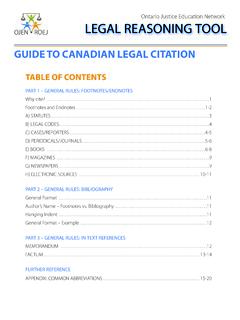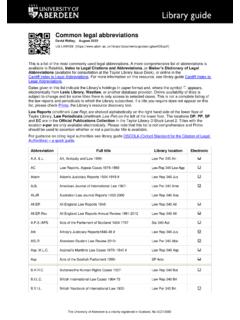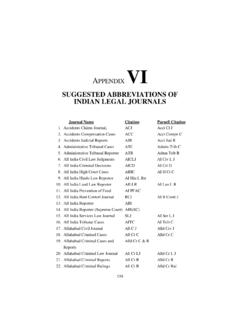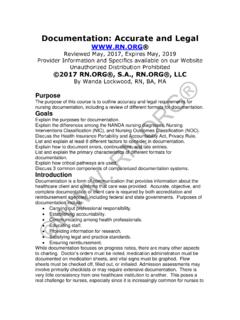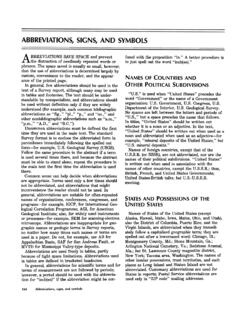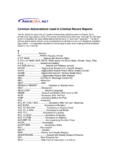Transcription of A Roadmap to Common-Control Transactions - Deloitte
1 A Roadmap to Common-Control Transactions2016 The FASB Accounting Standards Codification material is copyrighted by the Financial Accounting Foundation, 401 Merritt 7, PO Box 5116, Norwalk, CT 06856-5116, and is reproduced with publication contains general information only and Deloitte is not, by means of this publication, rendering accounting, business, financial, investment, legal , tax, or other professional advice or services. This publication is not a substitute for such professional advice or services, nor should it be used as a basis for any decision or action that may affect your business. Before making any decision or taking any action that may affect your business, you should consult a qualified professional advisor.
2 Deloitte shall not be responsible for any loss sustained by any person who relies on this used in this document, Deloitte means Deloitte & Touche LLP, Deloitte Consulting LLP, Deloitte Tax LLP, and Deloitte Financial Advisory Services LLP, which are subsidiaries of Deloitte LLP. Please see for a detailed description of the legal structure of Deloitte LLP and its subsidiaries. Certain services may not be available to attest clients under the rules and regulations of public 2016 Deloitte Development LLC. All rights vAccounting for Common-Control Transactions Overview and Scope Overview of Common-Control Transactions Scope Identifying Common-Control Transactions Meaning of the Term common Control Transactions Between Entities With common Ownership Measurement Measurement by the Receiving Entity Difference in Carrying Amounts Between the Parent and Transferring Entity Conforming Accounting Principles Measurement by the Transferring Entity
3 Exception for Transfers of Financial Assets Exception for Routine Transfers of Inventory Goodwill Other Issues That May Affect the Receiving or Transferring Entities Income Taxes Reorganization of Reporting Structure and Goodwill Impairment Testing Noncontrolling Interests in a Common-Control Transaction Presentation Change in the Reporting Entity Financial Statement Presentation by the Receiving Entity Pooling-of-Interests Method Identifying the Predecessor in Certain Common-Control Transactions Financial Statement Presentation by the Transferring Entity Disclosures Disclosures by the Receiving Entity Earnings per Share Disclosures by the Transferring Entity Transactions Involving Master Limited Partnerships 20ivContents Appendix A Glossary Terms Used in ASC 805-50 22 Appendix B Glossary of Standards and Other Literature 26 Appendix C abbreviations 28v PrefaceOctober 2016To our friends and clients:We are pleased to present A Roadmap to Common-Control Transactions .
4 This Roadmap provides Deloitte s insights into and interpretations of the guidance on accounting for Common-Control body of this Roadmap combines the principles from the Common-Control subsections of ASC 805-50 with Deloitte s interpretations and examples in a comprehensive, reader-friendly format. Further, the table of contents is a helpful navigational tool, providing links to topics and intend to incorporate this Roadmap along with others covering additional business combinations issues addressed in subsections of ASC 805-50 into a comprehensive business combinations Roadmap in the hope that you find this publication a valuable resource when considering the guidance on accounting for Common-Control , Deloitte & Touche LLP1 Accounting for Common-Control Overview and Overview of Common-Control TransactionsA Common-Control transaction is a transfer of net assets or an exchange of equity interests between entities under the control of the same parent.
5 A Common-Control transaction is similar to a business combination for the entity that receives the net assets or equity interests; however, such a transaction does not meet the definition of a business combination because there is no change in control over the net assets by the parent. Therefore, the accounting and reporting for a transaction between entities under common control is outside the scope of the business combinations guidance in ASC 805-10,1 ASC 805-20, and ASC 805-30 and is addressed in the Transactions Between Entities Under common Control subsections of ASC 805-50. Since there is no change in control over the net assets from the parent s perspective, there is no change in basis in the net assets. ASC 805-50 requires that the receiving entity recognize the net assets received at their historical carrying amounts, as reflected in the parent s financial statements.
6 ASC 805-50 does not specifically address the accounting by the transferring entity. In the absence of guidance, certain practices have developed regarding the reporting by the transferring entity in its separate financial Common-Control transaction has no effect on the parent s consolidated financial statements. The net assets are derecognized by the transferring entity and recognized by the receiving entity at their historical carrying amounts. Any difference between the proceeds transferred or received and the carrying amounts of the net assets is recognized in equity in the transferring and receiving entities separate financial statements and eliminated in consolidation. Therefore, the guidance in the Transactions Between Entities Under common Control subsections of ASC 805-50 and the following sections of this Roadmap applies only to the separate financial statements of a subsidiary that engages in a Common-Control transaction.
7 ASC 805-50 also provides guidance addressing whether the receiving entity should report the net assets received prospectively from the date of the transfer or retrospectively for all periods presented. If the recognition of the net assets results in a change in the reporting entity, the receiving entity presents the transfer in its separate financial statements retrospectively, similarly to a pooling of interests. If not, the receiving entity presents the transfer in its separate financial statements prospectively from the date of the transfer. ASC 805-50 does not specifically address the reporting by the transferring entity; 1 For a list of the titles of standards and other literature referred to in this publication, see Appendix B.
8 For a list of abbreviations used in this publication, see Appendix for Common-Control Transactions however, the transferring entity usually presents the transfer as a disposal on the date of the transfer in its separate financial ScopeASC 805-50 Transactions Between Entities Under common Control05-4 As noted in paragraph 805-10-15-4(c), the guidance related to business combinations does not apply to combinations between entities or businesses under common control. ASC 805-50 Entities15-5 The guidance in the Transactions Between Entities Under common Control Subsections applies to all 805-5015-6A The guidance in the Transactions between Entities under common Control Subsections does not apply to the initial measurement by a primary beneficiary of the assets, liabilities, and noncontrolling interests of a VIE if the primary beneficiary of a VIE and the VIE are under common control.
9 Guidance for such a VIE is provided in Section Mergers and acquisitions between or among two or more NFPs, all of which benefit a particular group of citizens, shall not be considered common control Transactions solely because those entities benefit a particular group. The mission, operations, and historical sources of support of two or more NFPs may be closely linked to benefiting a particular group of citizens. However, that group neither owns nor controls the guidance in the Transactions Between Entities Under common Control subsections of ASC 805-50 applies to the separate financial statements of a subsidiary that engages in a Common-Control transaction. However, ASC 810-10-30-1 addresses how a primary beneficiary of a VIE should initially measure the VIE's assets, liabilities, and noncontrolling interests when the primary beneficiary and the VIE are under common control.
10 That guidance, which is similar to that in ASC 805-50, states:If the primary beneficiary of a variable interest entity (VIE) and the VIE are under common control, the primary beneficiary shall initially measure the assets, liabilities, and noncontrolling interests of the VIE at amounts at which they are carried in the accounts of the reporting entity that controls the VIE (or would be carried if the reporting entity issued financial statements prepared in conformity with generally accepted accounting principles [GAAP]). Identifying Common-Control Meaning of the Term common Control The term control has the same meaning as the term controlling financial interest in ASC 810-10-15-8,2 which states:For legal entities other than limited partnerships, the usual condition for a controlling financial interest is ownership of a majority voting interest, and, therefore, as a general rule ownership by one reporting entity, 2 This definition reflects the amendments made by ASU 2015-02, which are effective for public business entities for fiscal years, and interim periods within those fiscal years, beginning after December 15, 2015.










